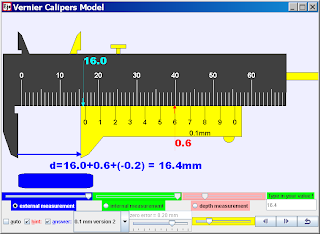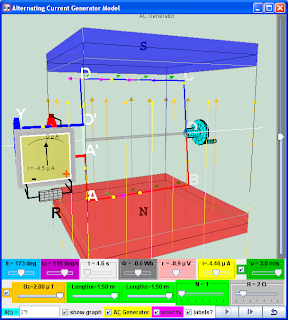http://weelookang.blogspot.sg/2011/08/nz-extended-ict-programme-for-ict.html
Briefing Document: Open Educational Resources / Open Source Physics @ Singapore
1. Overview
This document provides a summary of information extracted from a webpage detailing the activities of the "Open Educational Resources / Open Source Physics @ Singapore" initiative. The focus is on a specific event: the "NZ Extended ICT Programme for ICT Mentors @Monfort Secondary School" held on August 18, 2011. However, the webpage also provides a much wider context of the project's activities and resources, including a vast array of simulations, workshops and awards. This initiative is clearly dedicated to promoting the use of open educational resources and open-source physics simulations, particularly through tools like Easy Java Simulations (EJS) and Tracker.
2. Key Themes and Ideas
- Open Educational Resources (OER) and Open Source Physics (OSP): The core principle is the promotion and use of freely available and adaptable educational materials. The site emphasizes open-source physics simulations, primarily built with EJS and increasingly utilizing HTML5 and JavaScript for broader accessibility. This is emphasized in the site's title and repeated throughout its content: "Open Educational Resources / Open Source Physics @ Singapore".
- Technology Integration in Education: A significant focus is on the integration of technology, particularly simulations and interactive tools, into the teaching and learning of physics and mathematics. The use of "Easy Java Simulations" and "Tracker" software are heavily promoted. The website hosts numerous examples of these tools in action covering a diverse range of physics topics.
- Professional Development for Educators: The site documents numerous workshops, talks, and courses aimed at training teachers (ICT Mentors, STs, LTs) on using these resources effectively. The 2011 workshop at Monfort Secondary School is one example of this. The professional learning aspect also extended to international collaboration with workshops led by Prof. Francisco Esquembre, Wolfgang Christian and Félix J. García Clemente. This demonstrates a commitment to training educators and incorporating latest pedagogy.
- Active and Inquiry-Based Learning: Many of the resources are designed to facilitate active and inquiry-based learning approaches, moving away from passive learning. Simulations allow students to explore scientific concepts by manipulating parameters and observing results. The mention of "Physics by Inquiry" and the focus on "Conceptual Understanding" point to this methodology.
- Accessibility and Reusability: The use of HTML5 and JavaScript for simulations makes the resources accessible on various devices, moving beyond Java applets. The materials are also designed to be adaptable and reusable, fitting with the spirit of OER.
- Cross-Curricular Applicability: While primarily focused on physics, there are examples of resources for mathematics and chemistry. Some simulations such as the "Part Part Whole Primary Math Model" and "Primary School Numbers from 1 to 100" show adaptability to other disciplines. The site also mentions "Learning Chemistry with wRiteFormula". This shows a commitment to OER as applicable across various disciplines.
- Community and Collaboration: The website highlights a network of educators, researchers and international collaborators who contribute to the project. This is evident in the numerous workshops led by various individuals, and collaborations such as "SSTRF Use of Digital Simulation-based lessons to enhance Metacognition in Mathematics by Dr L M Y". The use of Twitter hashtags #ictmentor and #edsg indicates an active online community of educators sharing ideas and resources.
- Awards and Recognition: The project has received significant recognition, including the "UNESCO King Hamad Bin Isa Al-Khalifa Prize for the Use of ICTs in Education," the “Ministry of Education Outstanding Innovator Award,” and several Public Service Awards. These demonstrate the significant impact and contribution of the initiative.
3. Key Facts and Examples
- 2011 NZ Extended ICT Programme for ICT Mentors @Monfort Secondary School: This specific event involved sharing of different tech tools. Kin Mun shared about using Socrative for student response systems. Andrew shared about professional learning networks and Twitter. Loo Kang shared his blog and resources with focus on EJS Simulations.
- Quote: "Kin Mun shared http://www.socrative.com/ Engage the class using any device, his passion on student response system."
- Quote: "Andrew shared Professional Learning Networks and the use of twitter http://twitter.com/."
- Quote: "Loo Kang shared the blog http://weelookang.blogspot.com/http://weelookang.blogspot.com/2010/06/ejs-open-source-alternating-current.html http://weelookang.blogspot.com/2010/06/ejs-open-source-vernier-calipers-java.html"
- Easy Java Simulations (EJS): A key tool used for creating interactive physics simulations. There are numerous links to simulations made using this software, such as "EJS Magnet Falling Through Solenoid" and "EJS Direct Current Motor 3D Model."
- Tracker Video Analysis: The website includes links to many "Tracker" based activities, showing how video analysis can be used to study and model real-world phenomena, for example "Tracker Bungee Jumping Tiger Fox by Leong Tze Kwang, Lim Jia Hui"
- Extensive Resource Library: The site boasts an impressive library of simulations covering a broad range of physics topics from kinematics and dynamics to electromagnetism and modern physics. Examples include: "Three State Radioactive Decay JavaScript Model Simulation Applet HTML5," "Rutherford's Atomic and Thomson's Configurable Plum Atomic-Model JavaScript HTML5 Applet Simulation Model," and "Kepler Orbit JavaScript HTML5 Applet Simulation Model".
- Use of JavaScript and HTML5: The initiative is increasingly adopting JavaScript and HTML5 for simulations, ensuring compatibility across different platforms, replacing the older Java applets.
- Active Workshops and Professional Development: The website records numerous workshops over the years, showcasing the ongoing efforts to educate teachers and promote the use of OER and OSP. These range from short workshops to week-long programs.
- Numerous Awards: Recognition for innovative contributions to education such as the "UNESCO King Hamad Bin Isa Al-Khalifa Prize for the Use of ICTs in Education" and “Ministry of Education Outstanding Innovator Award”.
4. Conclusion
The Open Educational Resources / Open Source Physics @ Singapore project is a robust initiative that is evidently making a significant impact on physics education in Singapore and potentially beyond. It champions the use of open educational resources, particularly interactive simulations, to facilitate active and inquiry-based learning. The project's commitment to professional development, cross-curricular applicability and continued innovation is clearly evident. The consistent record of workshops, research projects, and awards reflects the significant impact this project has achieved.
NZ Extended ICT Programme for ICT Mentors @Monfort Secondary School
 |
||
| Example shared http://weelookang.blogspot.com/2010/06/ejs-open-source-vernier-calipers-java.html |
 |
| Example shared http://weelookang.blogspot.com/2010/06/ejs-open-source-alternating-current.html |
NZ Extended ICT Programme for ICT Mentors
@Monfort Secondary School venue is 15 Serangoon North Avenue 1 Singapore 555888
View Larger Map
18 august 2011
1430-1700 hrs
Meeting Room
Participants:
ICT Mentors
Monfort Secondary School Principal
Wong Kin Mun
This email address is being protected from spambots. You need JavaScript enabled to view it.
Summary of sharing:
Andrew shared Professional Learning Networks and the use of twitter http://twitter.com/.
Do follow the NZ Extended ICT Programme for ICT Mentors here. the hasttag is #ictmentor
http://twitter.com/#!/ndrewtaneh
http://twitter.com/#!/AspartanX
http://twitter.com/#!/yitsin77
http://twitter.com/#!/IvinChan
http://twitter.com/#!/wongkinmun
Sg guru twitters that usually use #edsg hasttag
http://twitter.com/#!/lookang
http://twitter.com/#!/tucksoon
Loo Kang shared the blog http://weelookang.blogspot.com/
http://weelookang.blogspot.com/2010/06/ejs-open-source-alternating-current.html
http://weelookang.blogspot.com/2010/06/ejs-open-source-vernier-calipers-java.html
do check out the rest of them on the left menu :)
How to download Easy Java Simulations
How to install Java Runtime Environment [JRE] for running Easy Java Simulation
How to run Ejs for the first time
FAQ: Open Educational Resources and Open Source Physics in Education
- What is Easy Java Simulations (EJS) and how is it used in education? EJS is an open-source tool used to create interactive simulations of various physics phenomena. It allows educators and students to build and explore models, enabling a hands-on approach to learning complex concepts. EJS facilitates a deeper understanding by allowing users to manipulate variables and observe their effects in real-time, promoting inquiry-based learning.
- What are Open Educational Resources (OER) and how are they related to Open Source Physics (OSP)? OER are freely accessible and reusable educational materials, including simulations, lesson plans, and interactive tools. Open Source Physics (OSP) specifically focuses on the creation and use of open-source physics simulations and resources. OER and OSP align in their mission to provide accessible, high-quality educational content for educators and students alike, often utilizing platforms like EJS.
- What types of simulations are available as part of this project? The project includes a vast array of simulations, covering diverse topics across physics and mathematics. Examples include simulations of kinematics (moving car, projectile motion), mechanics (pendulums, collisions), electromagnetism (Lorentz force, magnetic fields), waves (sound, light), optics (diffraction, interference) and more. Many simulations are also available for primary and secondary math, such as fractions, shapes, and other concepts. The simulations are available in JavaScript and HTML5 formats, making them accessible across different devices.
- How can these simulations enhance learning in the classroom? These simulations support active learning by allowing students to explore concepts visually and interactively. Students can investigate "what if" scenarios by changing parameters, making predictions and testing hypothesis. This hands-on approach fosters a deeper understanding and retention of concepts compared to passive learning methods. The simulations also cater to different learning styles by offering a multi-sensory learning experience.
- What is the role of video analysis in this project? Video analysis, often done with software like Tracker, is integrated as a tool to analyze real-world motion and then create models that can represent these observations. This approach connects abstract physics concepts with observable real-life phenomena, allowing students to collect data and model real scenarios. By making this connection, the project promotes a more grounded understanding of physics.
- What is the purpose of the various workshops and events mentioned? The numerous workshops and events highlight the collaborative nature of this project and its commitment to supporting educators. These sessions aim to equip teachers with the skills to use and create their own simulations, effectively integrating technology into their teaching. They also provide opportunities for educators to network, share best practices, and keep updated with the latest resources and techniques. Topics include building simulations, video analysis and learning with technology.
- What is the significance of the awards and recognitions the project has received? The project's awards, such as the UNESCO King Hamad Bin Isa Al-Khalifa Prize, the Ministry of Education awards and the Public Service 21 awards recognize the significant contributions to education through innovative use of technology, and its commitment to educational excellence. They validate the project's impact and influence on education. The awards highlight the project's dedication to improving teaching and learning through effective use of technology, making educational resources accessible and affordable and the commitment to public service.
- How can teachers and educators get involved and use these resources? Educators can access the simulations and resources through the project's website and blog. They can download EJS, explore the numerous simulations, and participate in workshops to enhance their skills. Collaboration is encouraged through networking opportunities, allowing educators to share ideas and resources. The Creative Commons license facilitates adaptation and customization, further promoting the development and use of effective educational tools.
